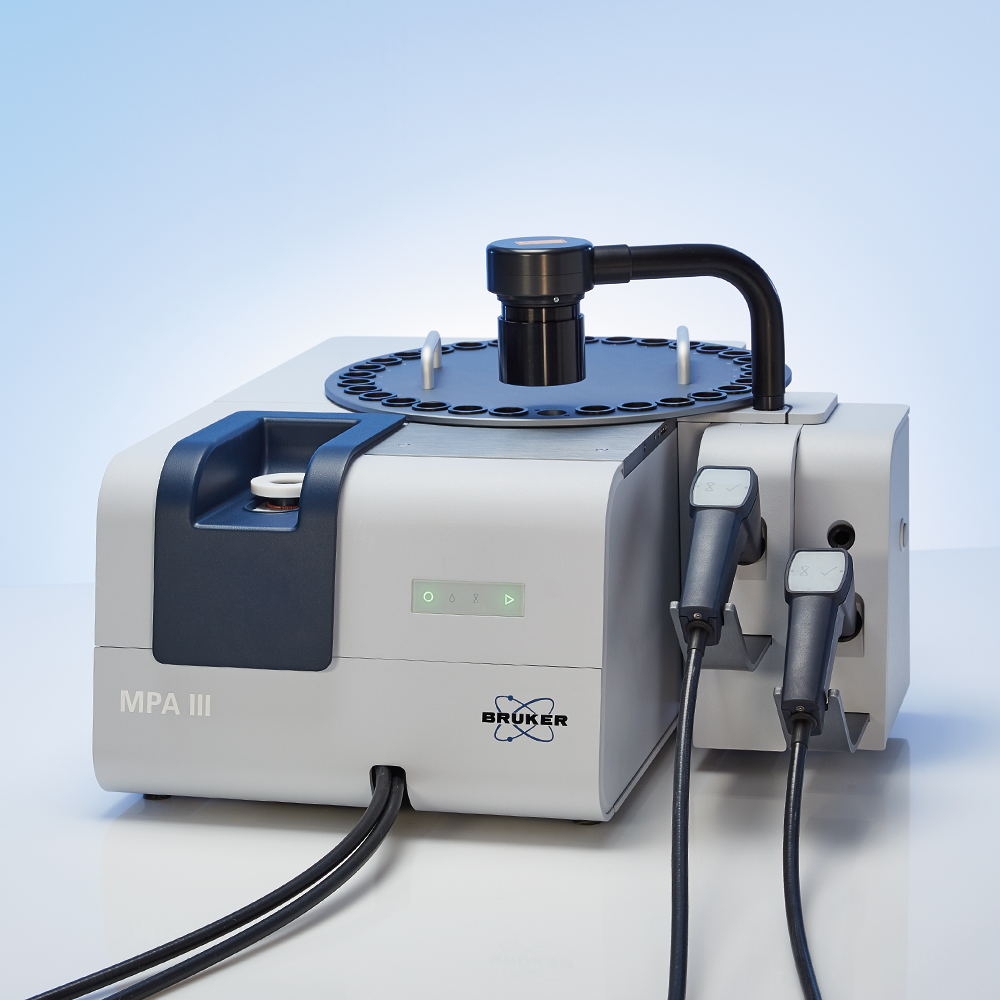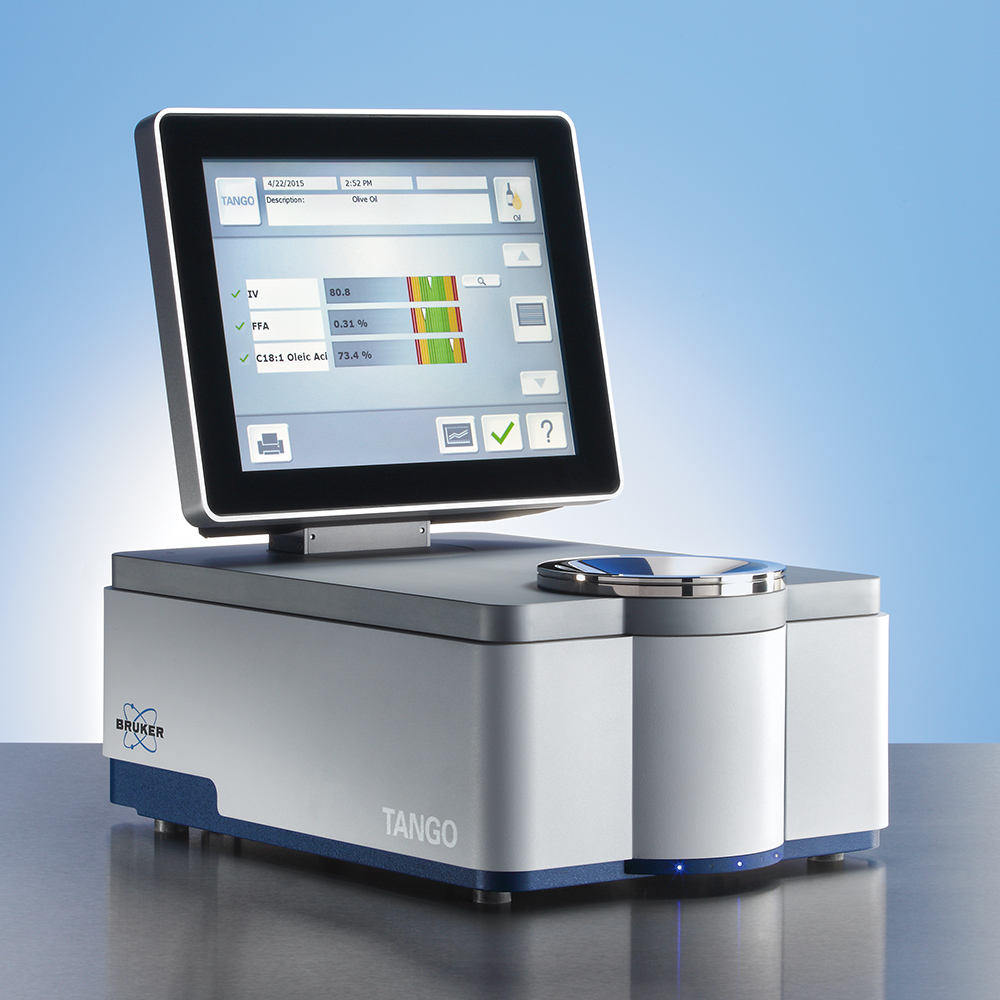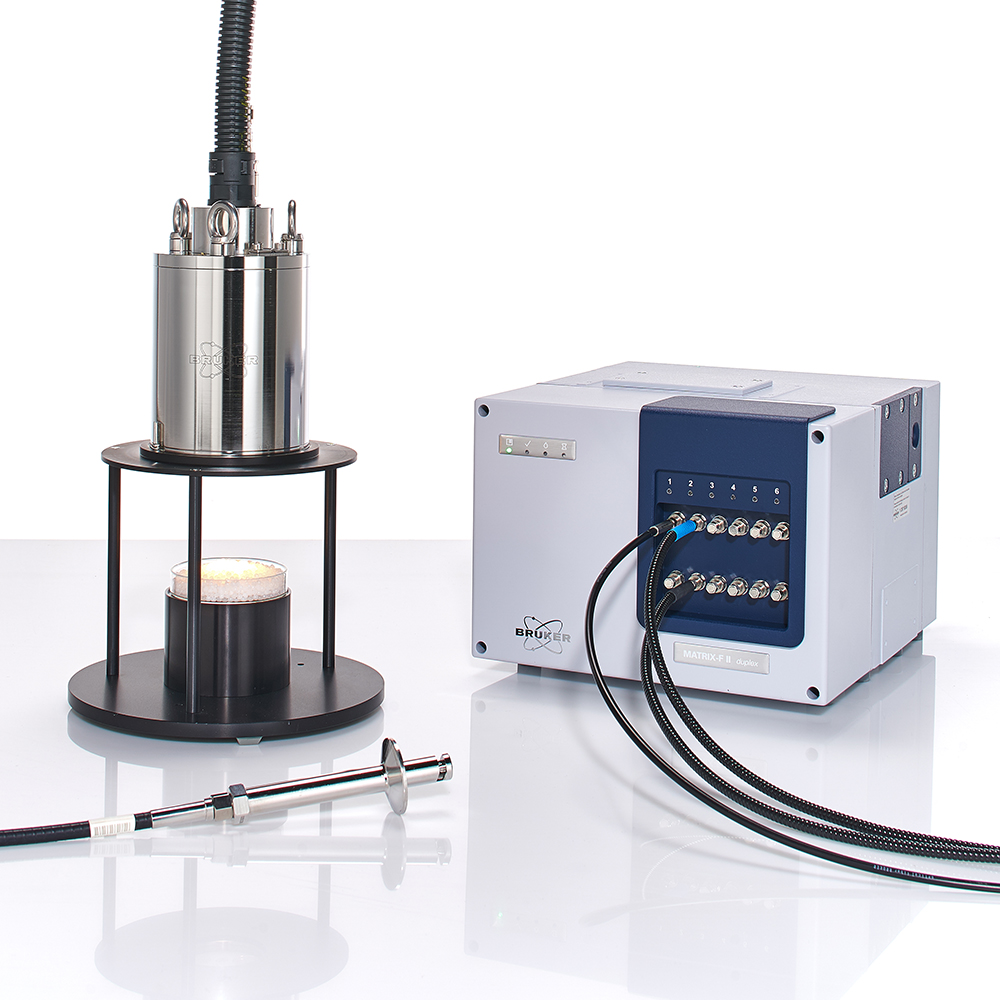

Edible Oils & Fats
Analysis of Edible Oils & Fats
Oils and fats are recognized as essential nutrients of our daily diet and contribute significantly to the regulation of different body functions. Numerous parameters are used to assess their quality. Bruker’s dedicated spectroscopy solutions enable a rapid analysis of edible oils and fats.
Edible oil producers and food processors are seeking fast and
non-destructive way to analyze fats and oils for process and quality
control purposes. Different parameters are used to assess the quality of
edible fats and oils, including iodine value (IV), free fatty acids
(FFA), trans fatty acids (TFA), anisidine value (AV), and various other
parameters
Rapid quality control for edible oils can be achieved
by Bruker’s dedicated FT-NIR solutions. The analysis is quick,
cost-effective and safe to use, even for untrained staff, since no
sample preparation is required. The oil is simply filled into an 8mm
glass vial and measured in the sample compartment of the spectrometer.
The main application areas for FT-NIR spectroscopy are
- Edible Oils
- Olive Oil
- Frying Oils
- Marine Oils
X-ray fluorescence (XRF) enables fast and nondestructive elemental analysis of process indicators such as phosphorus and chlorine in edible oils. Bruker’s Elemental Analyzer portfolio includes high-throughput lab-based ED-XRF and WD-XRF, point-and-shoot handheld XRF, micro-XRF, and ultra-trace analysis TXRF spectrometers. Energy-dispersive spectrometers with polarized X-ray optics are particularly suitable for the analysis of trace level elemental concentrations in oil and similar (light) matrices.
Solid Fat Content (SFC) determination is a recognized international standard method of prime importance for food processing and development. The SFC determination is used to measure the melting profile of fat composition, ensuring proper performance of several final products, such as margarine and cocoa butter. Bruker also offers a fully automated solution including tempering procedures, TD-NMR measurement, and determination of the SFC value plus presentation of the melting curve.
With food fraud becoming more prevalent, checking authenticity (PDO-Product of Designated Origin) is very important in the food market area. Food producers want to protect their brand image. The consumer relies upon regulatory bodies to control the quality and origin of the food eaten. Having food adulterated is a great concern to the industry and has also large financial implications. One of the best tools to determine origin or adulteration is mass spectrometry, either MALDI or LC/GC MS systems.
TD-NMR is a turn-key solution for rapid Quality/Process control and R&D in emulsion-based product manufacturing. The droplet size distribution (DSD) in Water-in-oil (O/W) emulsions as margarine, low fat spread, and butter influences their taste, smell, and appearance, as well as their shelf life and spread behavior. TD-NMR allows a fast, non-invasive, and accurate analysis of the droplet size distribution in these products. Additionally, it requires minimum sample preparation and no dilution.
The long chain molecules of fats are characterized using both X-ray Diffraction (XRD) and Small Angle X-ray Scattering (SAXS). Heating and other processing steps in the production have often been created empirically from methods well known to the industry. XRD and SAXS allow food scientists to understand and optimize the nanoscopic origins of oil and fat properties including flavor, lubricity, smoke point and shelf life.
Related Videos
Maxfry - producer of vegetable ingredients for oils and fats - relies on Bruker FT-NIR spectrometers for the rapid analysis of fats and oils. FT-NIR did not only simplify the in-house quality control. Today, Maxfry also offers services in the field of olive oil analysis based on NIR spectroscopy.
One stop shop solution for the automated determination of Solid Fat Content in fat compositions.
Gallardoliva - a brand that has managed to obtain the best oil thanks to its experience and effort to always achieve the highest quality of its product. Bruker Optics MPA FT-NIR spectrometer is today an important tool for the rapid analysis of oilve oil and oilve paste.
Solid Fat Content Analysis with Time Domain Nuclear Magnetic Resonance using the minispec SFC analyzer.









